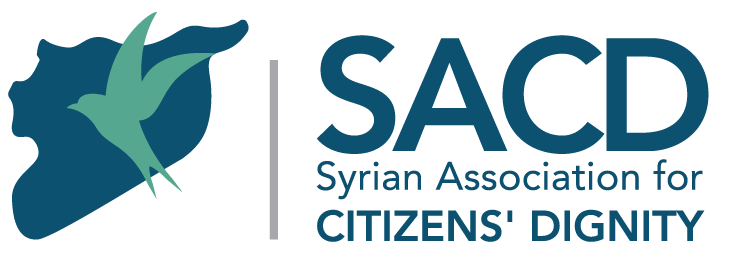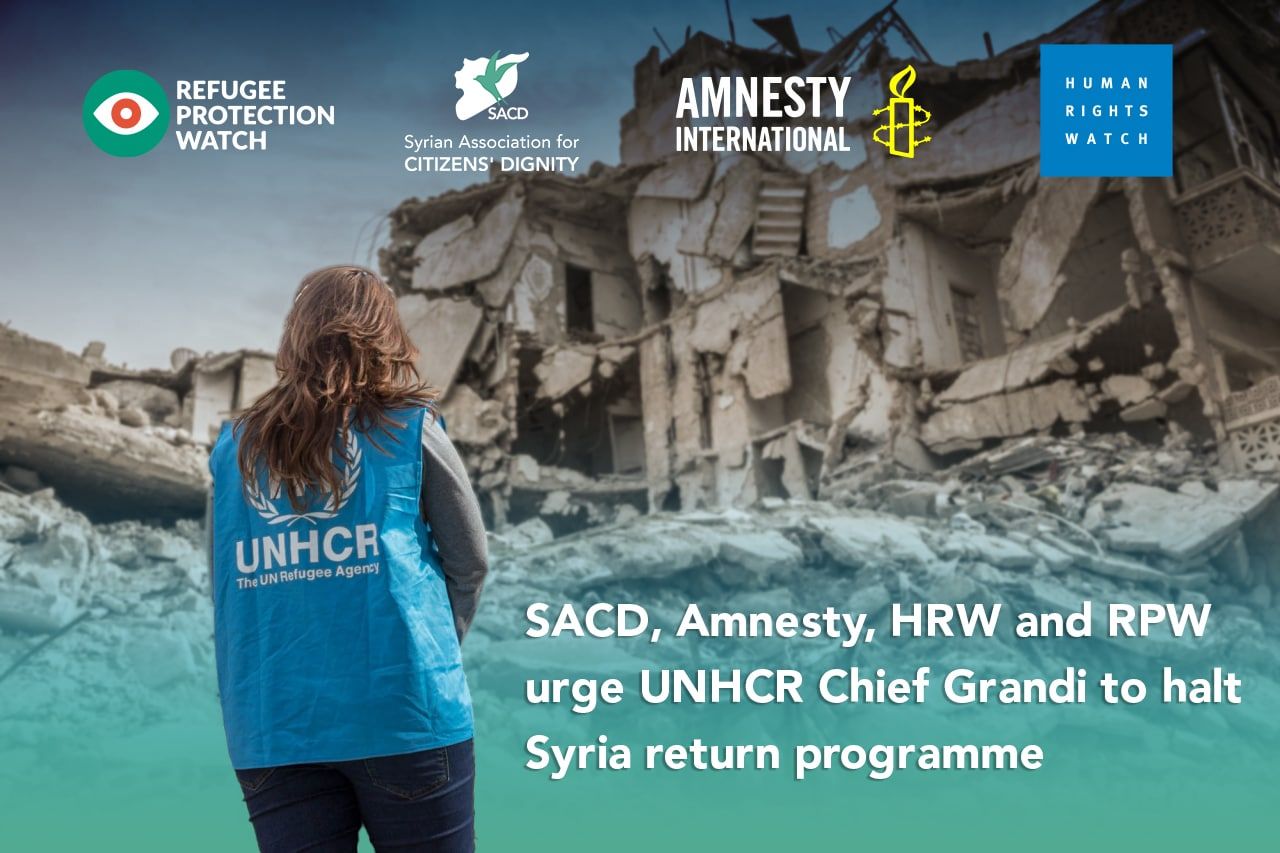As UN High Commissioner for Refugees Filippo Grandi begins a visit to Syria, prominent local and international rights groups* remind UNHCR that Syria is still not safe for return, and urge UNHCR and other UN agencies to halt programmes that could incentivise premature and unsafe returns.
Within Syria, conditions for the safe, voluntary and dignified return of displaced Syrians remain elusive. Not only are none of the UNHCR’s 22 “Protection Thresholds” – a baseline to assess conditions for return to Syria – met within any parts of Syria, but those who have voluntarily returned have faced a range of risks. In addition to reports by local organizations and networks, reports by Amnesty International, Human Rights Watch and the UN Commission of Inquiry for Syria have confirmed that refugees who have returned to Syria have been subjected to arbitrary arrest and detention, enforced disappearance, kidnappings, torture, sexual violence, and extrajudicial killings. Syrian government authorities are specifically targeting returnees to Syria for having fled the country, often accusing them of treason or supporting “terrorism”. Even those who obtained security clearances before returning to Syria were not protected from these grave human rights violations. In some cases, returnees were targeted simply because they came from parts of Syria that had been under opposition control. Research shows that women are as much at risk as men when they return. The fact that Syria is not safe for return has also been confirmed by the European Union and UNHCR itself.
Despite all this, and in stark contrast to UNHCR’s stated policy and strategy, which states that a list of 22 “protection thresholds” should be met before the UN would significantly enhance its return programming, there has been a growing focus in returns programming – particularly inside Syria – across the UN in recent months.
“Now is not the time to focus limited resources on a significant expansion of returns programming inside Syria. Such an approach ignores the basic fact that conditions for safe return are not in place inside Syria, and presents great protection and human rights risks to hundreds of thousands of displaced Syrians”, the undersigning organisations state. ”We urge UNHCR and other UN agencies to halt the planned expansion of their return programming until safe, voluntary and dignified returns can be guaranteed.”
In the past three years, only a very small number of refugees have returned to Syria. The number of returnees accounts for less than 1 percent of the Syrian refugee population in neighbouring countries: 38.235 Syrians in 2020, 35.980 Syrians in 2021, and 22.362 Syrians in 2022. UNHCR’s most recent return intention survey, published in June 2022, also shows that a mere 1.7 percent of Syrian refugees are considering to go back in the next 12 months, a historic low when compared to previous intention surveys. According to UN planning documents, levels of return are also expected to remain low in the foreseeable future.
Returns-focused programming
Despite low refugee return numbers (both actual returns, intention to return and return predictions), and the needs of refugees in host countries being higher than ever before, in recent months UN discussions on return programming have intensified.
The new UN Strategic Framework, which was signed only by the government of Syria and the UN due to objections by major donors, includes an entire pillar on refugee returns. Elsewhere, the burgeoning focus on “Early Recovery” work has already begun to focus on areas of “high return potential”. More recently, an “Area-Based Return Support” (ABRS) Roadmap was validated in April 2022 by the UN-led “Return & Reintegration Working Group” in Damascus. This process has been cloaked in secrecy, with seemingly no involvement of displaced persons, local CSOs and Refugee-Led Organisations (RLOs), or major donors.
The “ABRS Roadmap” gives the Government of Syria, the same government that is responsible for the displacement of millions of Syrians and serious human rights violations against returnees, a central role to dictate how, where, and when UN return assistance should be implemented.
Premature return risks
The “ABRS Roadmap” also risks to incentivize premature return to a country where conditions for safe return are not in place. As well as placing returnees at risk, premature returns contribute to an ongoing dynamic of “re-returns”, in which people return to Syria, only to find conditions for safe, voluntary and dignified return are not in place and they flee Syria once again. However, as neighbouring host countries have adopted stricter policies, including re-entry bans and closed their borders in recent years, such “re-returnees” will find themselves in an even worse situation than before they returned to Syria; with fewer resources and more vulnerable to the whims of human smugglers, lack of legal status and poverty.
Any shift to large-scale return assistance in the current context also runs the risk that host country governments in the region will seize upon it to accelerate their aggressive premature refugee return agendas, using it as an argument to strengthen the false narrative that Syria is safe for return.
| Background
UN High Commissioner for Refugees Filippo Grandi will visit Syria between 10 and 15 September 2022. His visit takes place against the background of a rapidly deteriorating humanitarian situation inside Syria and neighbouring countries. Humanitarian needs are at an all-time high. 6.8 million Syrians, approximately 20 percent of the global refugee population, remain displaced outside Syria, while another 6.9 million people are internally displaced within Syria. The conditions for their safe and voluntary return remain out of reach. |
* Amnesty International, Human Rights Watch (HRW), Refugee Protection Watch (RPW) and Syrian Association for Citizen’s Dignity (SACD)



